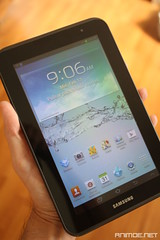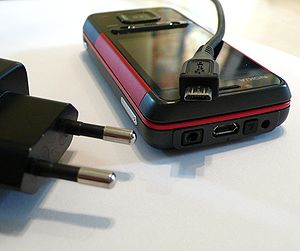 |
| Image via CrunchBase |
I have a few items to write on, but I believe this one is quite urgent.
Two weeks ago, I sort of “tampered” once again my already-quiet Samsung Galaxy R. I searched for the latest Android custom ROM, which is 4.2.2. I found the one that is offered by Paranoid Android. I actually managed to flash that one properly, both the kernel and the Google Apps. These are the files: i9103-3.00-16FEB2013-192725.zip and gapps-full-4.2-20130308.zip. These are coming from Paranoid Android.
Of course, things don’t end there.
When I was installing those root apps, I came to the SuperUser app, and to my mistake, I selected the wrong option, when I was offered something like “usually for HTC phone”, and that broke my phone’s SD card.
A lot of apps don’t work after that: Camera, Wallpaper Changer, etc. I found that many things are so much dependent on the internal SD card. Anyway, I already have the other phone, my GT-I3100, so the impact isn’t that much.
Still, I can’t rest assured. I’m not convinced that nothing can be done with the “broken” SD card. Nonetheless, I am one step short of bringing that old phone, although unused, to Samsung Service Center.
I did try and try and try to re-flash the ROM, so that by any chance, re-installing SuperUser app, if I tap the ‘correct’ button, the SD card may get fixed all by itself.
Furthermore, within the last week, I noticed that my phone is showing some “inversion” in the display, like the upper diagonal half (top left to bottom right) getting inverted. The time showing 10:50 is upside down. Imagine that!
Bad becoming worse. Really no fix, I thought. I searched the web for help on the ‘Damaged SD Card’, and although it was consistently mentioned in the articles that I found not to do format, I still tapped on the ‘Format’ button in the suggested fix by the apps that identified the SD card as damaged. I was wondering, the one who developed the App isn’t the one who wrote the articles…?
Then my insatiable curiosity got me.
I said, there could be something offered by CM, the same 4.2.2 kernel, for my GT-i9103. So yesterday, I searched the web. Something came up. There were 2, actually. There was the kernel alone, cm-10-20121223-UNOFFICIAL-i9103.zip, and the pair: I9103DXLP6_I9103OLBLP6_XSP.zip and gapps-jb-20121011-signed.zip. Looking at the dates, I said, these are earlier released than the one from Paranoid Android. So I was asking myself, “Why didn’t I see these first?”
Anyway, I went to download the files, not knowing whether I should do flash using the standalone kernel, or the pair.
I decided to use the pair, but to be sure, in case something doesn’t work, I also copied the standalone zip file. True enough, there was an error thrown out with the pair, the main zip file. I proceeded to install the Google Apps from the zip file despite the fact that the main file didn’t install properly, and then after reboot, the phone was in a boot loop.
I now tried to install the standalone file, and it worked! Still, first reboot resulted to a boot loop.
I did another flash, and this time, using the standalone kernel file, and this went through without a problem, and the reboot also went through nicely, and when the phone came up, I entered all the necessary credentials, and the apps were installed back automatically.
But Play Store app was missing, and though I can search and “install” it using the browser, the app doesn’t show in the Apps list. It is nowhere to be found. So I thought, can I bring it up using the other half of the pair, just the Google Apps file?
And that I did. I flashed the GApps file, and after reboot, the Google Apps were in.
And guess what? The main reason for my posting this article is to say that after flashing the CM 4.2.2 kernel for my GT-i9103, the SD Card came back to life!
Also, the other reason why I would be more comfortable running CM codes is that there is a regular update, which I download and install now and then, sometimes every night (NIGHTLY builds). That is what I do with the GT-P3100 phone.
So now I have a CM custom Android 4.2.2 ROM running, with the Google Apps in, and the SD Card fully functional once again!
Hope this short post will be of help to somebody as well.
Till then!
















































